As the historic location of Japan’s surrender in World War II, the USS Missouri battleship needs little introduction. That defining moment and the ship that was its stage have a permanent place in the hearts, souls, and minds of Americans.
Not surprisingly, the USS Missouri is now a famous museum ship in Pearl Harbor, Hawaii, where it serves as an emblem of sacrifice, heroic intensity, and service for future generations to admire and understand.
The Missouri has without question earned its place in history.
The ship supported combat efforts in the Pacific theater during famous battles such as Iwo Jima and Okinawa.
Even though it was built in the 1940s, the USS Missouri went on to support U.S. military efforts in the Korean War. The deactivated ship was brought back in the 1980s during the Reagan-era initiative to deploy a 600-ship Navy. It addressed the Navy’s need for an Iowa-class battleship, and it cleared mines and provided fire support during Operation Desert Storm in 1991.
The USS Missouri bombarded key Iraqi targets in the opening days of the war.
These attacks marked the first time the Missouri’s 16-inch guns had been fired since the Korean War.
Like other WWII-era battleships, the USS Missouri was heavily armed and heavily armored, with thick plates to withstand incoming attacks, according to Robert Sumrall’s 1988 book, Iowa-Class Battleships: Their Design, Weapons and Equipment.
According to Sumrall, the ship was built with an underwater protection system featuring three watertight compartments, two of which were kept full of seawater to absorb impact from a torpedo. The ship also had a double bottom to protect against seamines.
The USS Missouri was upgraded many times over the years, with improved fire control systems, radar, and electronic warfare technologies. The vessel was integrated with four Close In Weapons Systems able to blanket areas with defensive interceptor projectiles.
The ship also received Mk 141 quad cell launchers to fire Harpoons and up to 32 Tomahawk missiles.
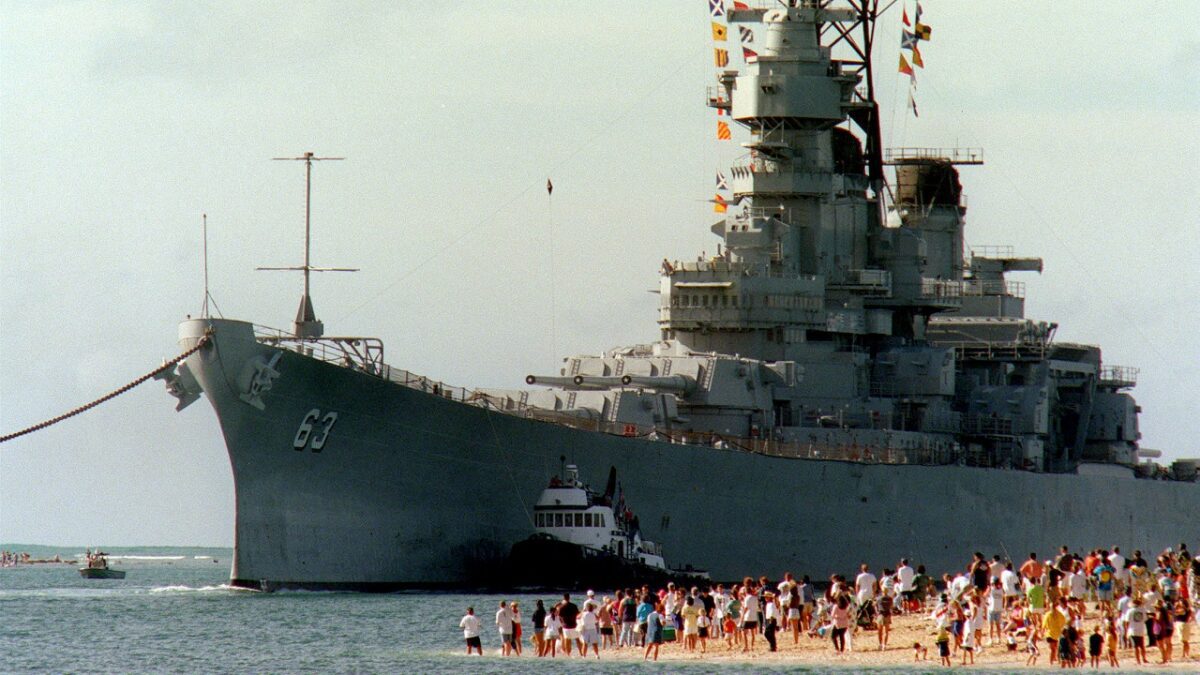
People gather on the beach to see the battleship USS Missouri (BB 63) enter the channel into Pearl Harbor, Hawaii, on June 22, 1998. Secretary of the Navy John H. Dalton signed the Donation Agreement on May 4th, allowing Missouri to be used as a museum near the Arizona Memorial. The ship was towed from Bremerton, Wash. DoD photo by Petty Officer 1st Class David Weideman, U.S. Navy.

Image of Iowa-class battleship compared to Montana-class battleship that was never built. Image Credit: Creative Commons.
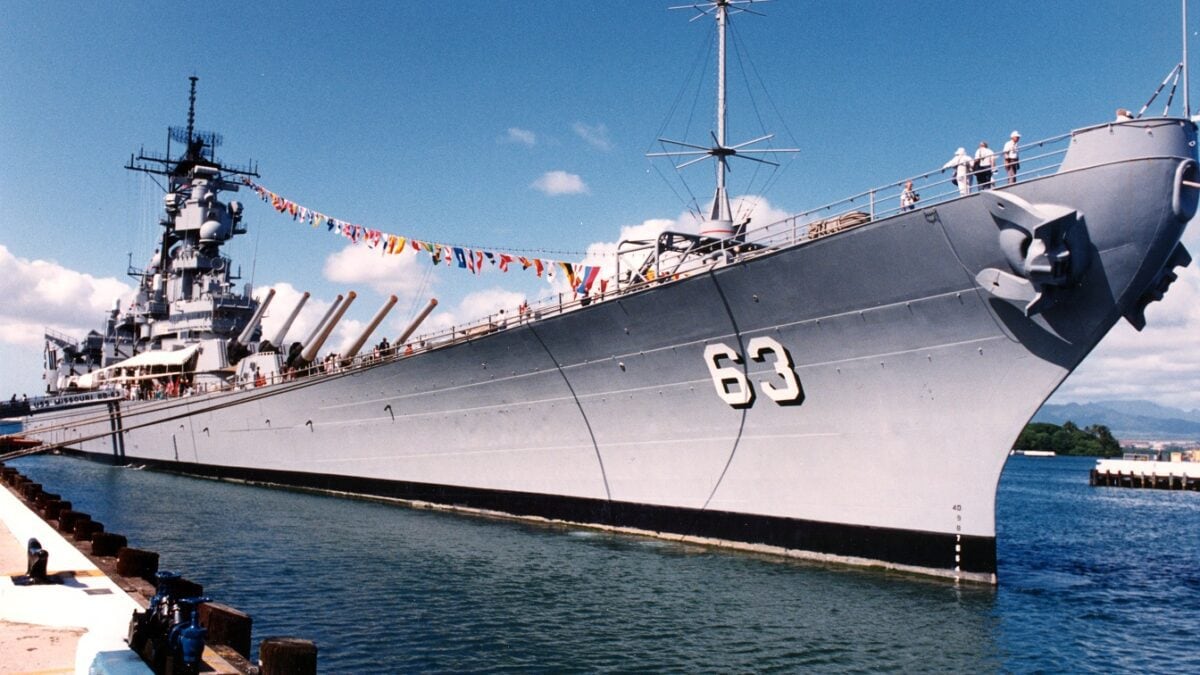
The battleship USS Missouri (BB-63) stands moored to a pier at Naval Station Pearl Harbor, Hawaii. Missouri is in Hawaii to take part in the observance of the 50th anniversary of the Japanese attack on Pearl Harbor.

The battleship EX-USS Missouri returns to Ford Island after finishing scheduled repairs at Pearl Harbor Naval Shipyard. Missouri underwent three months and $18 million of preservation and maintenance repairs at Pearl Harbor Naval Shipyard.
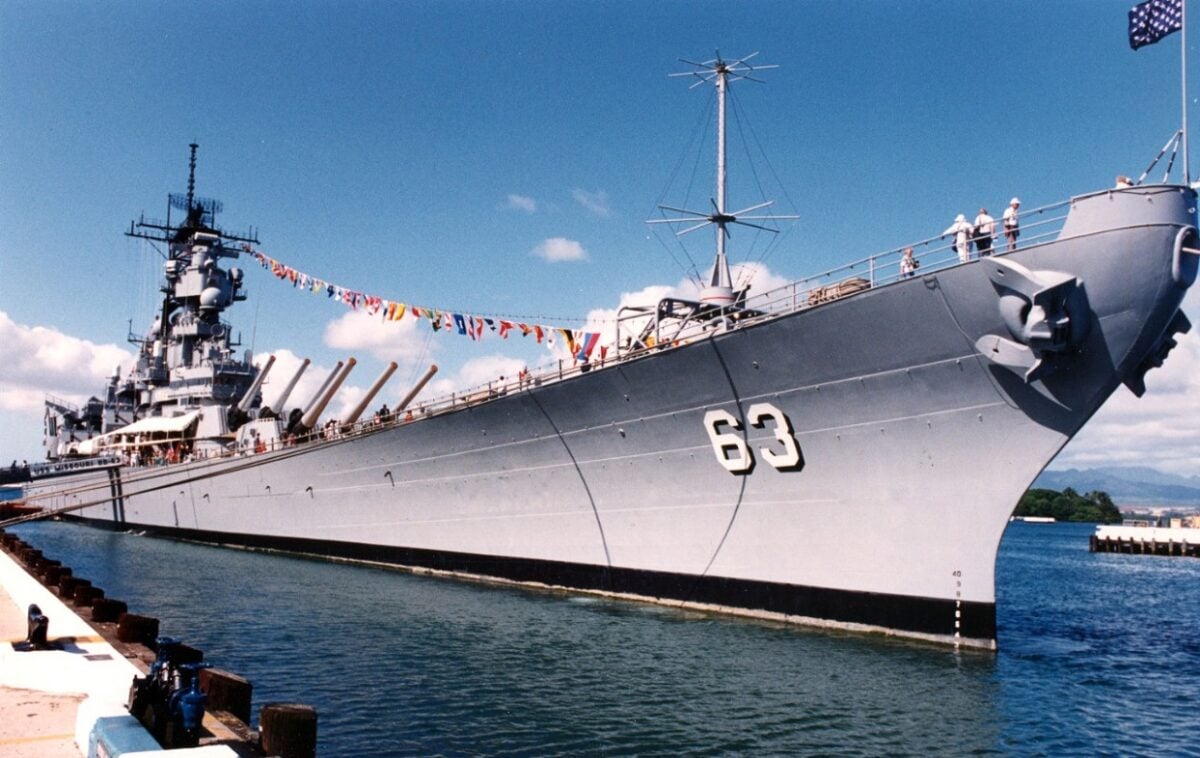
Image: Creative Commons.
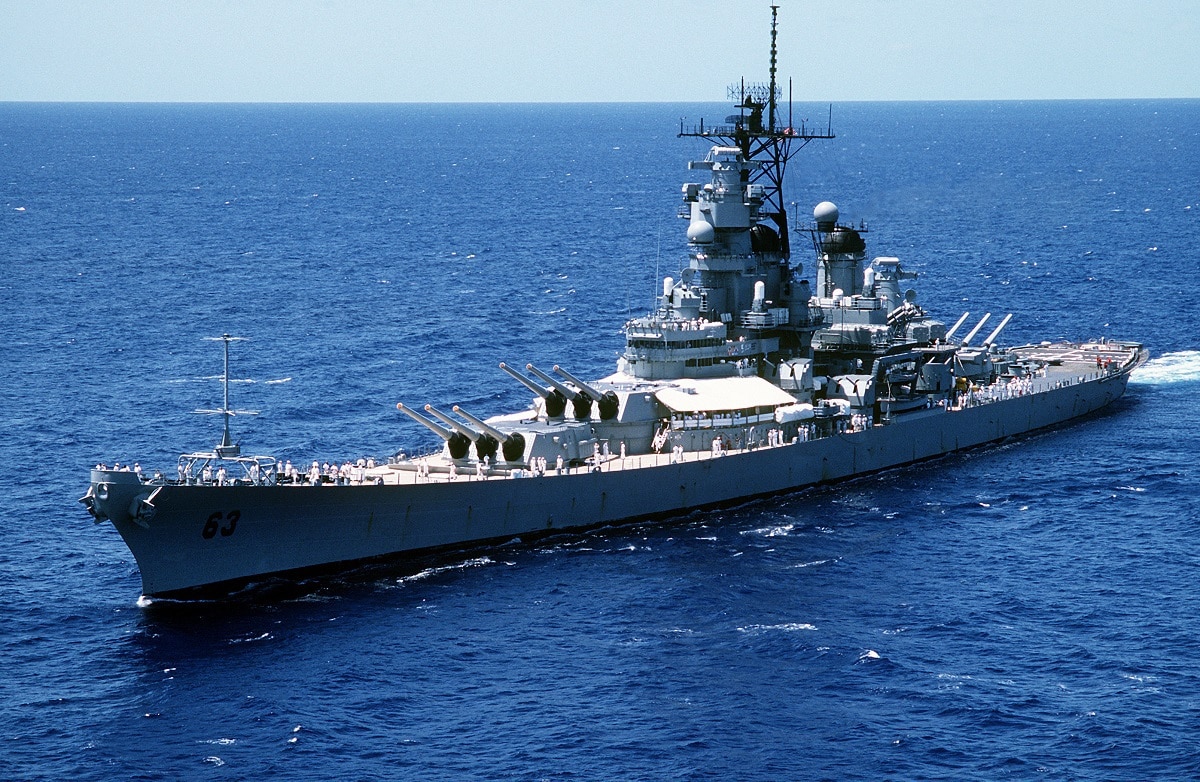
A port bow view of the battleship USS MISSOURI (BB-63) underway.
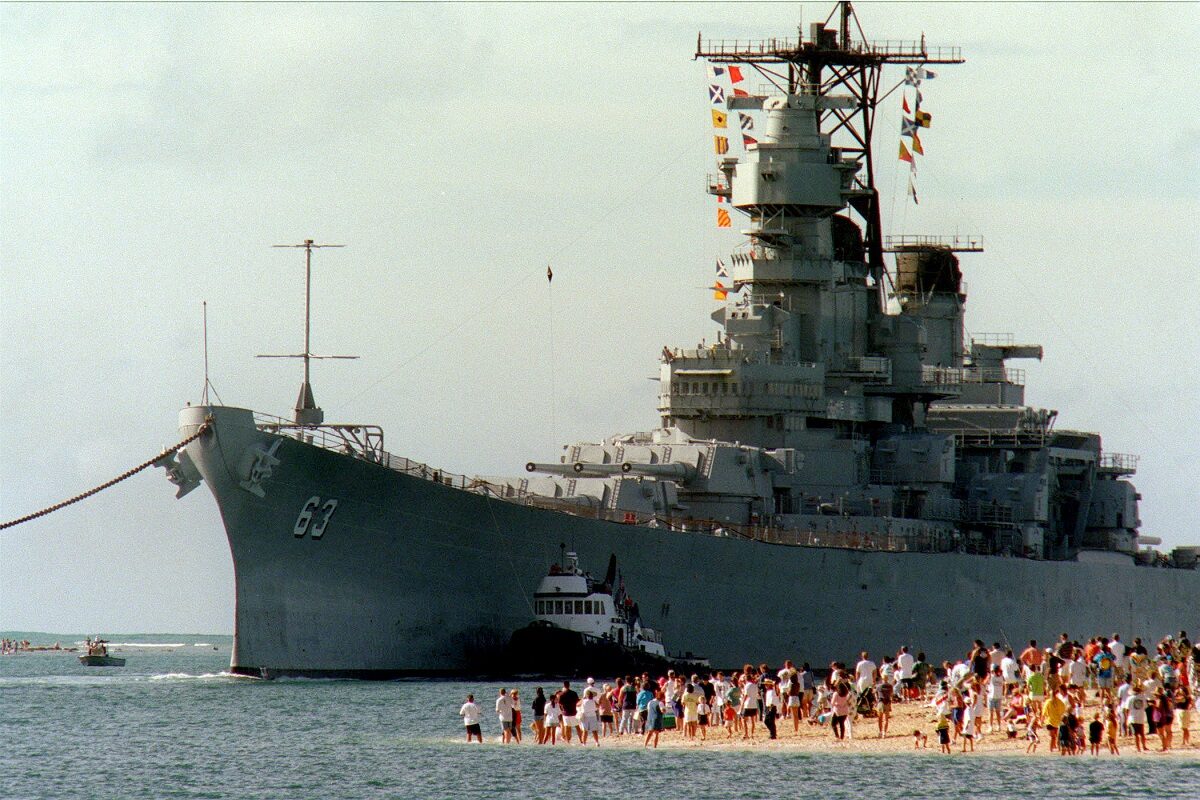
People gather on the beach to see the battleship USS Missouri (BB 63) enter the channel into Pearl Harbor, Hawaii, on June 22, 1998. Secretary of the Navy John H. Dalton signed the Donation Agreement on May 4th, allowing Missouri to be used as a museum near the Arizona Memorial. The ship was towed from Bremerton, Wash. DoD photo by Petty Officer 1st Class David Weideman, U.S. Navy.
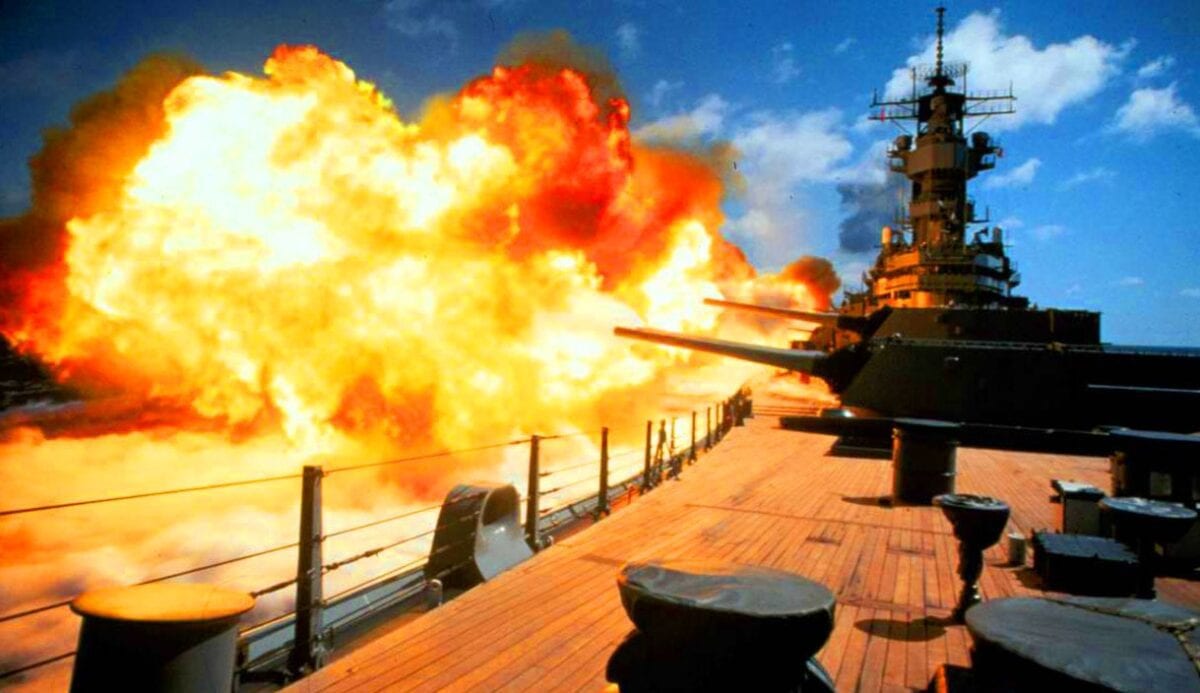
Kris Osborn is the Military Affairs Editor of 19FortyFive and President of Warrior Maven – Center for Military Modernization. Osborn previously served at the Pentagon as a Highly Qualified Expert with the Office of the Assistant Secretary of the Army—Acquisition, Logistics & Technology. Osborn has also worked as an anchor and on-air military specialist at national TV networks. He has appeared as a guest military expert on Fox News, MSNBC, The Military Channel, and The History Channel. He also has a Masters Degree in Comparative Literature from Columbia University.
From 19FortyFive
How To Sink A $3 Billion Dollar Submarine: Leave A Hatch Open
Smashed To Pieces: Video Shows Ukraine Hitting Russian Air Defenses

